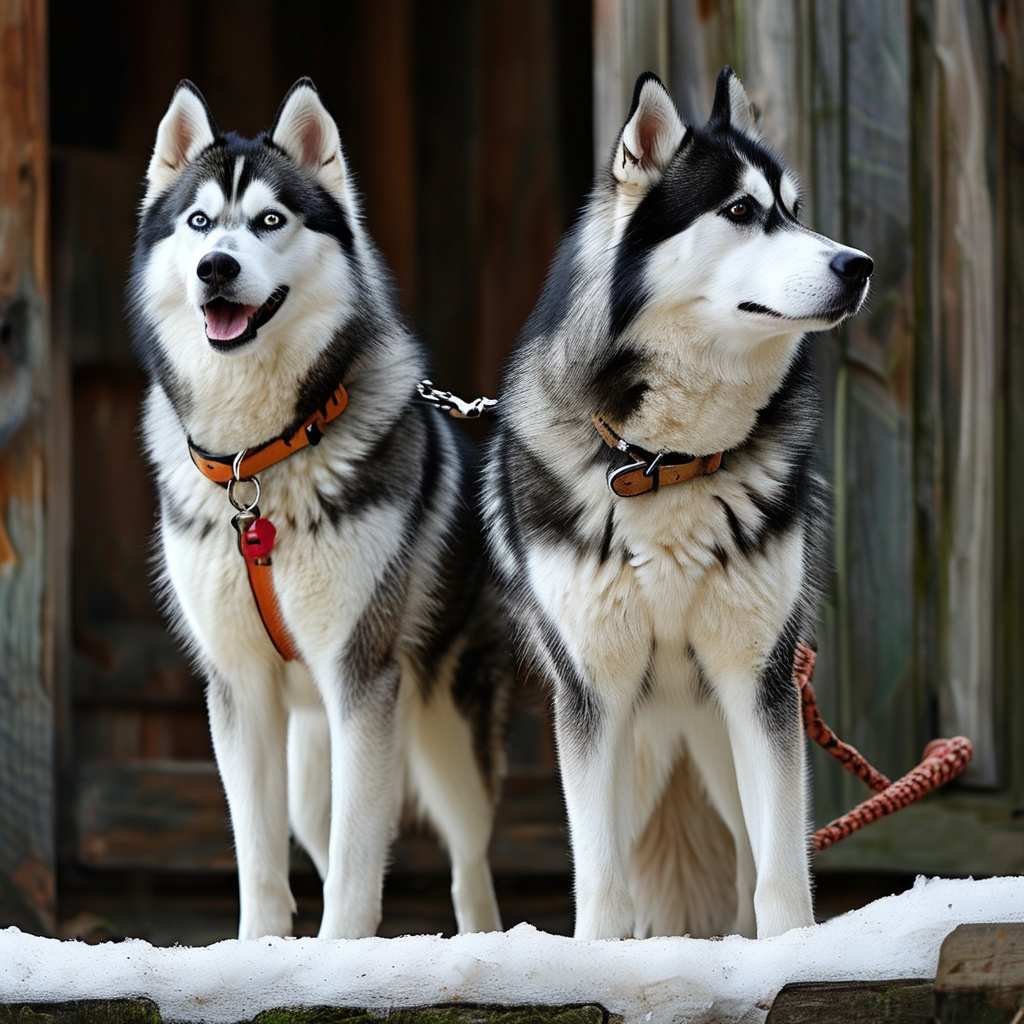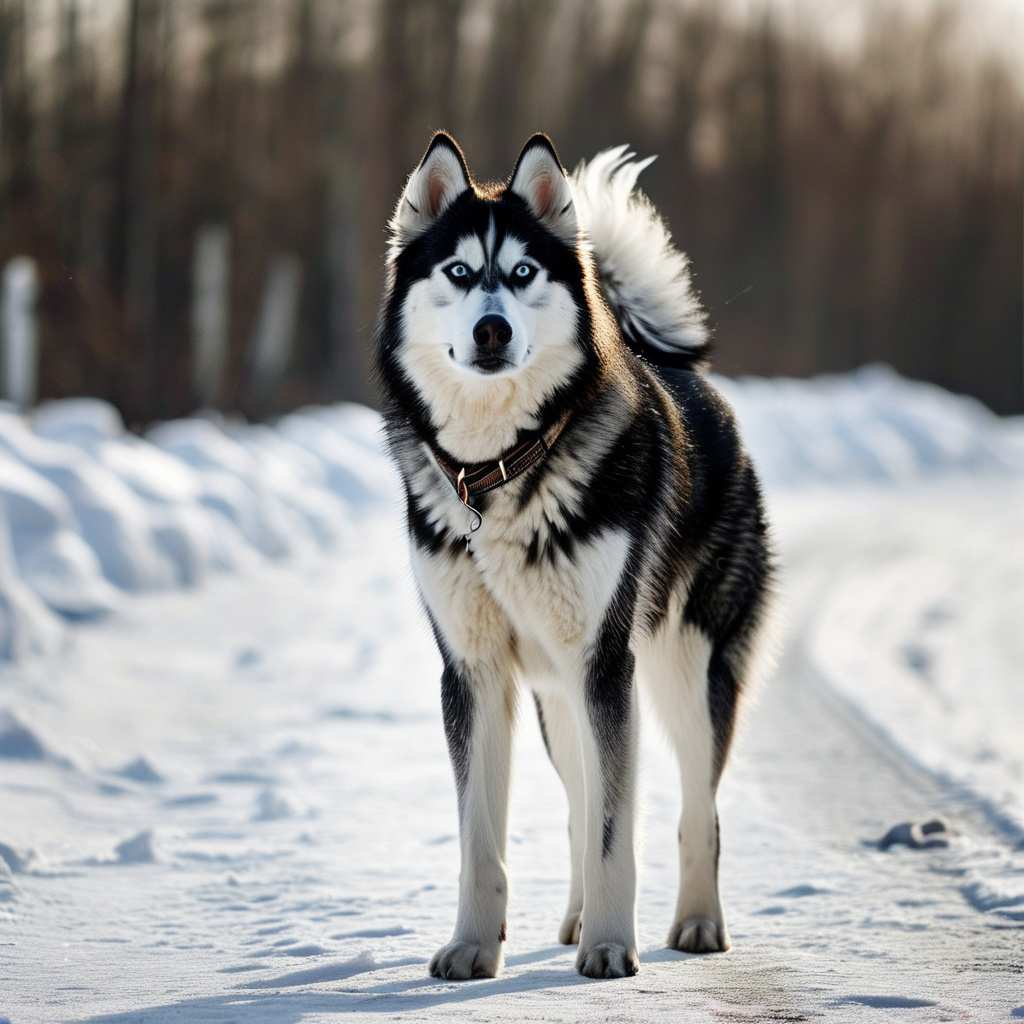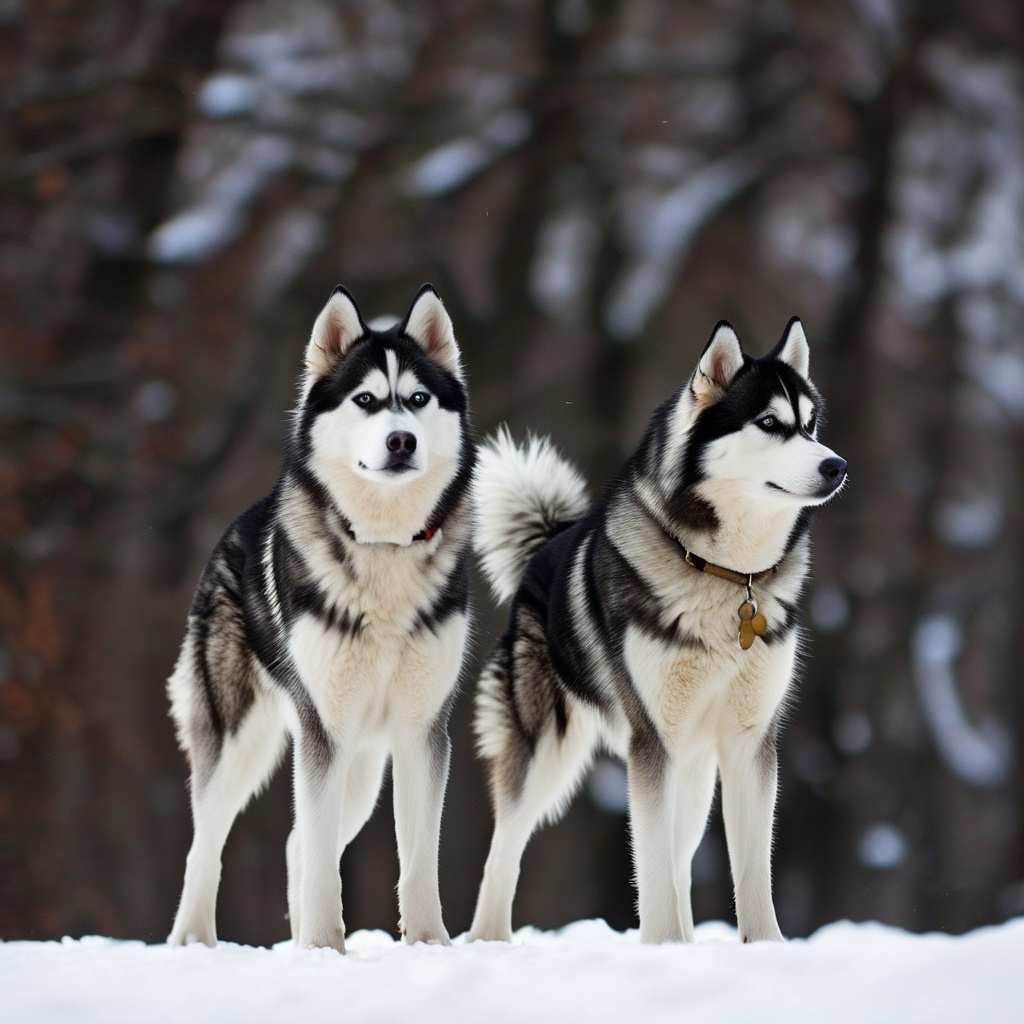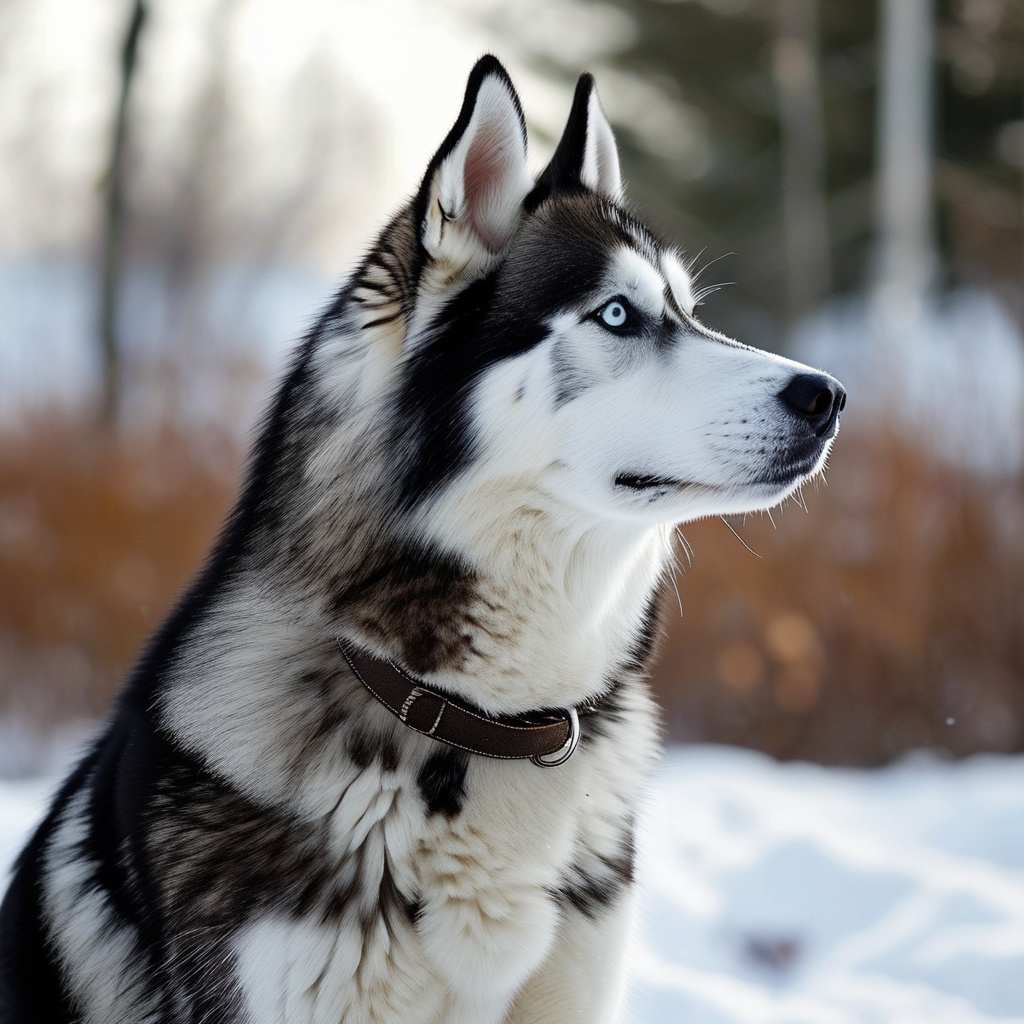 Introduction:
Introduction:
The Siberian Husky is a majestic, powerful breed originating from the cold regions of Northern Siberia. Known for their striking appearance, including their thick fur and captivating eyes, these dogs have been used as sled dogs for centuries and still possess a strong work ethic. Huskies are energetic, affectionate, and playful, but owning one requires a significant commitment. From daily exercise to grooming, potential owners must be prepared for the unique challenges this breed presents. In this guide, we’ll explore the characteristics, care requirements, and considerations for welcoming a Husky into your home.
On a chilly winter afternoon, we’ll take a closer look at another equally wintery dog: the Siberian Husky. Just look at its fur and it’s easy to see that these dogs come from cold regions, namely Northern Siberia. From the start, Huskies have been used as sled dogs, and they still love the work. They need a lot of exercise, too.
Related Post: The Energetic and Stubborn Yorkshire Terrier: A Complete Guide
Here’s what a Husky dog looks like:
A Husky is a strong, well-built dog with an athletic build. His head is about the same size as his torso, and his ears are triangular, high, and close together. One of the most distinctive features of the Husky is its eyes, which can be a variety of colours. One eye might be brown, while the other is bright blue. He moves smoothly and gracefully, and he can move very fast.
 Dogs of this breed reach the withers.
Dogs of this breed reach the withers.
Male dogs typically range from 53.5 to 60 cm in height, while females are usually between 50.5 and 56 cm.
As for weight, the standard range for this breed is as follows:
Males typically weigh between 20.5 and 28 kg, while females weigh between 15.5 and 23 kg. They come in a wide range of colours, from white to black, and sometimes also chocolate, orange, silver, and grey. They often have a mix of colours, like black and white or golden with a hint of white. You can tell a Husky by the mask that forms on their snout due to the colour contrast.
Related Post: Caring for Your Pregnant Cat: Essential Tips for a Healthy Pregnancy and Kittens
Caring for a Husky Dog
One of the most important things to keep in mind before getting a Husky is that these dogs shed a lot. To get an idea of how much shedding there is, just look at the thick, fluffy fur and imagine it on the carpet, pillows, cutting board, clothes, dishes, and sofas. The fur isn’t fine and is pretty difficult to remove. The Husky fur tends to get stuck in the fabric, so it takes a bit of effort to keep the furniture clean. The intensity of the hair depends on the conditions in which the dogs are kept. If the dog spends most of its time outside the house, it’ll go through this process twice a year.
Huskies also shed a lot during the heating season, especially in spring, when they replace almost all of their top and undercoats.
During this time, it’s important to comb the dog daily, but during the rest of the year, it’s enough to do so about once a week. If your dog has longer hair, you’ll want to use a metal comb with varying lengths of teeth. For shorter hair, a medium-density metal comb should do the trick.
As for bathing, it’s best to avoid bathing these dogs too often to keep their hair’s natural protective layer intact. If you don’t take care of your dog’s hair, it’ll be more prone to damage from the elements. Make sure you moisturize it properly and use the right cosmetics. When it’s time to bathe your dog, it’s a good idea to place a non-slip mat in the tub to prevent paws from slipping on a wet surface.
Before we decide to get this breed, we should think about whether we can meet its needs. It’s also worth noting that huskies need to be walked a lot and feel most comfortable in cooler climates and at low temperatures. You should also think about whether you can take your dog with you on vacation. If you plan to go to a warm country, it will be very unpleasant for your dog if you take a husky with you. It would be quite unpleasant, to say the least.
 Huskies are healthy, resilient, and live a long time—about 10 to 14 years. Their thick, beautiful fur protects them from wind and frost. It’s also worth noting that if our Husky lives at home and we let him out in the winter or don’t dry his fur thoroughly before walking him, he’s likely to catch a cold. It’s also a good idea to think about giving your dog the right vitamins and supplements to support his joints. On top of that, like most large dogs, the Husky is prone to hip dysplasia and urethral displacement.
Huskies are healthy, resilient, and live a long time—about 10 to 14 years. Their thick, beautiful fur protects them from wind and frost. It’s also worth noting that if our Husky lives at home and we let him out in the winter or don’t dry his fur thoroughly before walking him, he’s likely to catch a cold. It’s also a good idea to think about giving your dog the right vitamins and supplements to support his joints. On top of that, like most large dogs, the Husky is prone to hip dysplasia and urethral displacement.
Related Post: The Unique Charm of Thai Cats: A Return to the Original Siamese Look
Huskies are full of energy and need a lot of exercise. They’re happy dogs who see fun in every opportunity. It’s probably best to think twice before buying a puppy of this breed. They’re gorgeous dogs and great company, but you’ll need to make sure you can give them enough exercise and entertainment. So, if you live in a studio apartment, it’s probably not the best idea to get a Husky. It’s unlikely you’ll be able to spend three-quarters of the day outside with the dog. It’s important to choose a dog that suits your needs and abilities. A dog is a friend for life, so it’s important to make sure you’re ready for that commitment.
Huskies also have a very strong hunting instinct, which they inherited from their ancestors. They love to hunt. Hunting can be pretty stressful for the handler. If the dog spots, hears, or even senses potential prey on a walk, there’s not much chance it’ll respond to us.
 Apart from the irresistible chase, huskies are often disobedient escape artists. If we let the sled dog outside or even in the garden, we should keep an eye on it because there’s a good chance it’ll learn how to open the gate or dig a hole and just escape. However, this kind of behaviour is usually the result of certain circumstances. If you play with your dog a lot and make sure he gets enough exercise, he shouldn’t have any problems. It’s thought that, depending on their character, huskies should ideally run around 40 km per week, which equates to almost 6 km of energetic walking and running each day.
Apart from the irresistible chase, huskies are often disobedient escape artists. If we let the sled dog outside or even in the garden, we should keep an eye on it because there’s a good chance it’ll learn how to open the gate or dig a hole and just escape. However, this kind of behaviour is usually the result of certain circumstances. If you play with your dog a lot and make sure he gets enough exercise, he shouldn’t have any problems. It’s thought that, depending on their character, huskies should ideally run around 40 km per week, which equates to almost 6 km of energetic walking and running each day.
This breed isn’t suitable for children (unless they’re sensible and reasonably strong teenagers) because although the Husky is happy, friendly, and family-oriented, it is very strong. That means smaller children and older people wouldn’t be able to handle it on a walk. One stronger pull on the leash, and we’re on the floor! A husky can pull up to nine times its body weight, so it’s easy to see how well it can guide its handler. That’s why a husky can play with children but only goes for walks with adults.
Since they’re strong and love sledding (they’re also very social and enjoy contact with other dogs), it’s a good idea to see if there’s an opportunity to train sled dogs in the area (sled dog associations can often be found in Polish mountain towns, but also in many others).
Interestingly, despite their serious look and great strength, sled dogs are very gentle, so they’re not particularly suitable as guard dogs – they’re just friendly to everyone in general.
Related Post: Should We Let Our Cat Outside? Understanding the Risks and Benefits for Urban Cats
Conclusion:
Owning a Siberian Husky is both a rewarding and demanding experience. While these dogs are known for their beauty, energy, and friendly nature, they also come with unique needs, from extensive exercise to regular grooming. Huskies thrive in cool climates and require attentive care to maintain their health and happiness. Before bringing a Husky into your life, it’s important to assess your ability to meet their exercise, grooming, and space requirements. With proper care, these loyal, hardworking dogs can be wonderful companions, but their needs must align with your lifestyle for a harmonious relationship.
FAQs:
- Do Siberian Huskies shed a lot?
Yes, Huskies shed heavily, especially during spring and fall. Regular grooming is essential to manage their thick, fluffy fur. - How much exercise does a Siberian Husky need?
Huskies are highly energetic dogs that need around 6 km of walking or running daily, which adds up to about 40 km per week. - Are Huskies good with children?
While Huskies are friendly and playful, they are very strong. They are best suited to play with children, but only adults or strong teenagers should handle them during walks. - Can Huskies live in warm climates?
Huskies are better suited to cooler climates. If you live in a warm area, extra care is needed to ensure they don’t overheat. - Are Huskies good guard dogs?
No, Huskies are typically too friendly and sociable to be effective guard dogs, as they tend to welcome strangers rather than ward them off. - How often should I groom a Siberian Husky?
Huskies should be groomed weekly, but during shedding seasons, daily grooming is recommended to manage the heavy shedding. - Do Huskies have a strong prey drive?
Yes, Huskies have a strong hunting instinct. They can be difficult to control if they spot or sense potential prey during walks.
References:
- American Kennel Club: Siberian Husky
- PetMD: Siberian Husky Health and Care
- The Spruce Pets: Siberian Husky Overview
- Hill’s Pet Nutrition: Siberian Husky Breed Information
- AKC: What to Know Before Getting a Siberian Husky
- DogTime: Siberian Husky Breed Information
- VetStreet: Siberian Husky Breed Profile